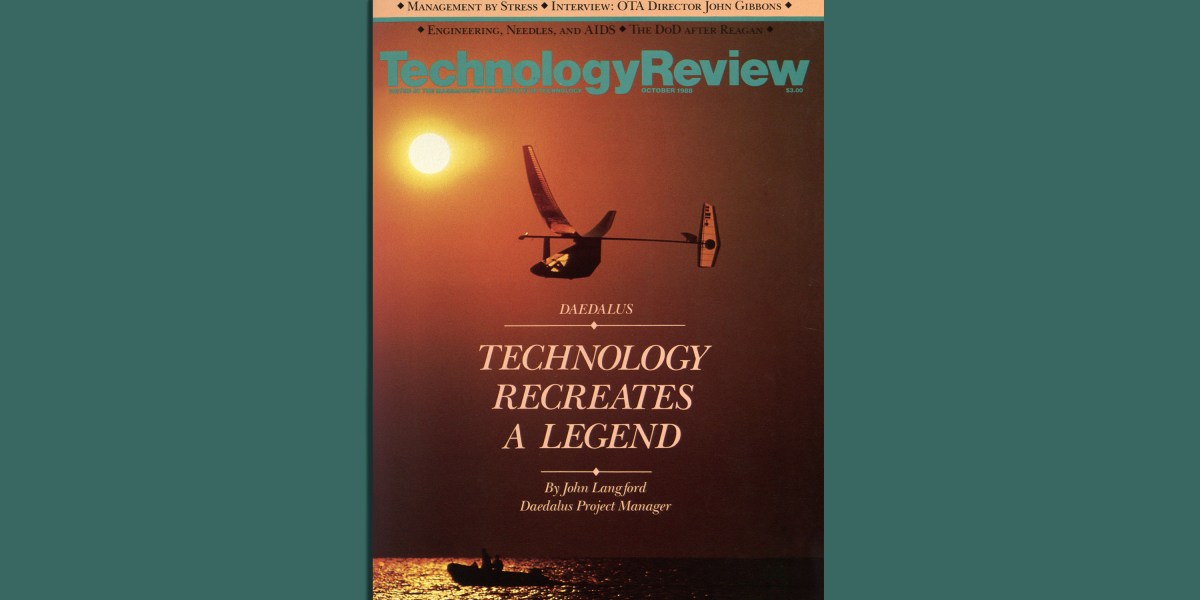
Of course, Langford’s team modified some of the mythical parameters. The aircraft replaced feathers and wax with carbon-fiber wings, and the pilot, the Greek cyclist Kanellos Kanellopoulos, didn’t flap his way into history—he pedaled. Plus, the 500-mile journey to Sicily seemed beyond mortal capacity, so Langford and his team set their sights on Santorini.
The problem with the Daedalus project, and human-powered aircraft of any kind, is the grueling effort to remain aloft, the risk of crashing, and the expense—none of which was lost on Langford. “In itself, our Daedalus project could never answer the question ‘So what?’” he admits.
At the time, unseen clouds of human-generated chlorofluorocarbons, gathering in Earth’s stratosphere for half a century, had blasted a seasonal hole in the protective ozone layer over Antarctica, signifying a disaster unfolding across Earth’s atmosphere. As the global community rallied, the “So what?” he was looking for emerged.
To Langford, an entrepreneur whose twin passions are climate research and sustainable aeronautics, the perfect plane is an unmanned aerial vehicle able to ply the stratosphere, collect climate data such as ozone readings, and harness the sun for its energy needs. Aurora Flight Sciences, his first company, unveiled such a plane, Odysseus, in 2018. His latest company, Electra, wants to decarbonize all aviation.
That a human-powered plane able to fly mere meters above the sea for a handful of hours managed to inspire solar-powered robotic planes that continuously comb Earth’s stratosphere could make sense only in the context of our climate challenges. Such novel aircraft symbolize the ability of human beings to achieve mythic feats when joined in a common quest, however daunting.
Bill Gourgey is a science writer based in Washington, DC, and teaches science writing at Johns Hopkins University.
